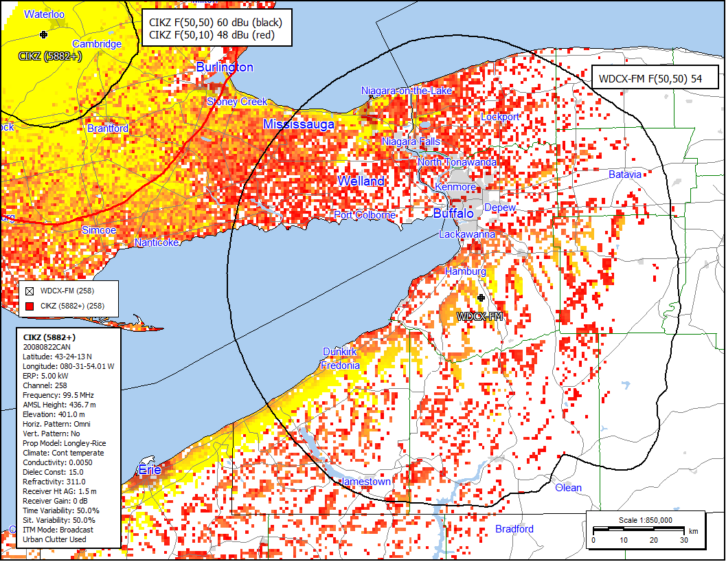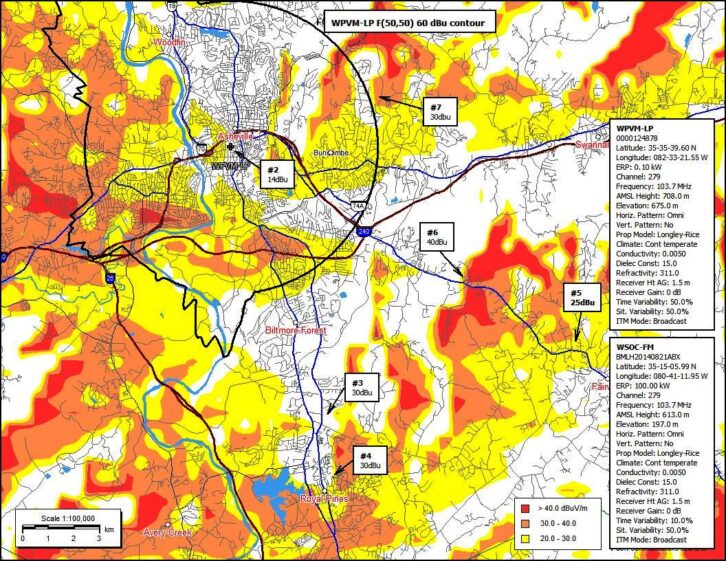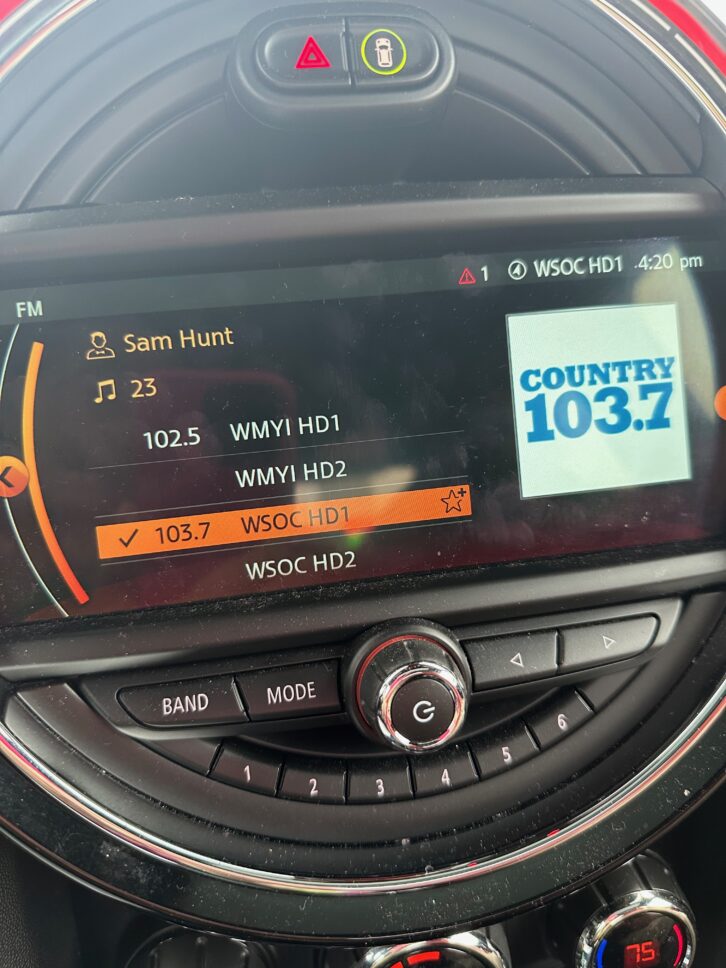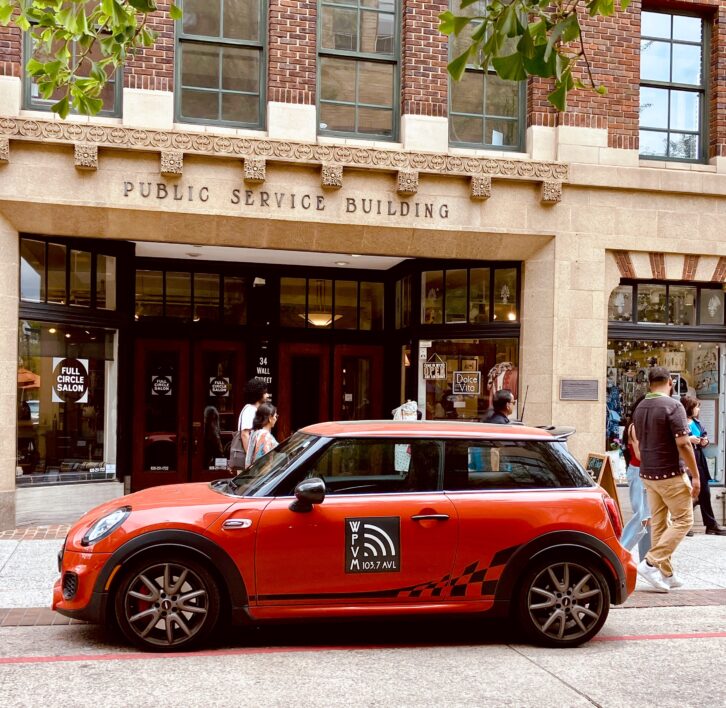We’ve heard about hijackings of broadcast signals, in which a disgruntled former employee or someone trying to get across a political message jams a signal or breaks into an STL feed.
The subject of this story is a different kind of undesirable signal capture in which the signal from a local FM station is replaced by that of an HD Radio signal from a distant station. This unintentional displacement appears to be a consequence of physics and the growth of in-band on-channel digital broadcasting.
One such inadvertent capture occurred last December, affecting operations at a Buffalo, N.Y. station, WDCX(FM), which is part of Crawford Media Group.

“This was right after Christmas,” recalled Chief Engineer Brian Cunningham. “We started getting calls almost immediately — at least a couple of dozen — with listeners saying they were hearing a Canadian station on our frequency. I also heard about the Canadian signal from our station manager.”
A quick database search of Canadian FMs operating on WDCX’s 99.5 MHz frequency and with sufficient power to capture FM demodulation circuitry in car radios in the Buffalo metro area showed such possibilities were slim, but the calls kept coming.
As WDCX operates with an ERP of 110 kW it would indeed take a hefty amount of co-channel signal to “commandeer” local area radios via the FM demodulator capture ratio phenomenon.
Cunningham realized that the appearance of the foreign signal coincided with a temporary cessation of WDCX’s MP1 HD Radio signal due to an equipment failure in the audio processing chain feeding it.
“Both main and backup audio processing systems for the HD channel failed,” said Cunningham. He noted that the failure occurred at a time when heavy snows had hit the Buffalo region, delaying restoration of the processing.
It’s difficult to term this “interference,” as the HD radios were doing what they were supposed to do by switching from analog to digital reception whenever a digital signal is sensed.
One engineering source at a major broadcast group told Radio World that his company has encountered this issue on occasion. But the phenomenon is relatively unfamiliar in the industry.
North Carolina
Is it happening in other markets? It appears to have affected a low-power FM farther south, as described by Michelle Bradley, founder of REC Networks, an advocacy group and consulting engineering firm for LPFMs.
“This occurred with a North Carolina station several years ago,” said Bradley. “It was never resolved.”
The station is WPVM(LP) in Asheville. General Manager Davyne Dial said that she was not aware of the potential for this sort of “hijacking” until she purchased a car equipped with an HD Radio in 2021.
“My Mini Cooper has a screen that shows call letters and frequency,” said Dial. “The text screen confuses us with a Charlotte, N.C. station, WSOC(FM).”

That Class C station shares WPVM’s 103.7 MHz frequency and transmits an HD signal. The stations are separated by almost 100 miles, but WSOC operates with 100 kW ERP while WPVM radiates but 100 Watts.

Dial said that analog reception of the Asheville LPFM is normally not affected by the Charlotte station. She has not received calls from listeners but speculates that with the growing number of HD Radio receivers in cars, some potential listeners may not be aware of the existence of the noncommercial community station.

“I was able to figure out what was happening and go through the Mini Cooper’s setup menu and disable the HD reception,” she said. “I think a lot of people might not be that tech savvy and don’t realize what’s going on.” She worries that other listeners are not hearing what they intended to listen to.
While the Buffalo full-power FM regained its temporarily lost audience once a processor could be rigged up and the HD operation restored, that’s not an option for Dial’s small station, which has no plans or budget for adding HD service. Bradley at REC Networks said the cost of HD implementation is prohibitive for most LPFMs.
East Texas
Radio World contacted Xperi.
“Your outreach is the first we have heard of this concern,” a company spokesperson said.
“Xperi has not heard from the station or received an official report on this issue and is unable to comment without receiving an official FCC inquiry, per their established reporting protocols.”
So is this a widespread issue? A possible third instance surfaced at an east Texas Class A FM.
KZQX(FM) is licensed to Tatum, Texas, and serves the Longview/Marshall/Kilgore market. Owner Chuck Conrad said, “I had a listener call me and tell me that they were listening to my 100.3 station, but there was artwork on the radio display that didn’t match the station.”
Conrad said neither he nor anyone else in east Texas operates with HD, so an informational display of the type described by the listener would have had to come from a broadcaster outside of the area.
In his region the terrain is mostly flat and the Gulf of Mexico is at hand. Out-of-area VHF propagation is common, he said. However, such “freak” reception doesn’t usually occur in December.
“It’s not unusual to pick up a Dallas station here,” he said. “It’s not unusual to have them blasting in here in east Texas when ducting rears its ugly head several times a year. [But] the December instance was very unusual, as usually [such occurrences] are in the spring and continue into the latter part of June.”
After learning about the cases described earlier, Conrad believes this was what his listener experienced. He planned to monitor for further out-of-area intrusions.
“Almost everything I’ve got is co-channeled with a 100 kW station on an 1,800-foot tower, and this could be a real issue, as local people like to hear local stuff,” he said.
“Most people keep their cars for eight or 10 years. So this may not be a problem now, but as more and more cars become equipped with HD radios, this could become an issue, especially if they (HD broadcasters) increase the power of the digital carrier.”
Most consumers, he said, wouldn’t know how to get into the menu structure to shut off the HD Radio if they wanted to listen to a local channel.
Conrad also worries about the possible impact on FM translators (he owns six). He notes that his advertisers are all local small businesses that want to reach local audiences. If these inadvertent captures were to become more common, it could be harmful to his business.
During the initial research in connection with this article, the above cases were the only ones that came to light; since then, others have surfaced and will be described in a subsequent article.
What’s happening?
In adding LPFMs and translators to the FM band, the FCC uses spacings to avoid co-channel interference; they should be sufficient to avoid a broadcaster “stepping on the toes” of another. But hybrid digital radio is a different animal than the analog FM service the commission has been authorizing for more than 80 years.
Told of the findings above, engineering consultant John Kean offered to crunch some numbers to determine how this sort of capture might be possible even with proper spacing of stations.
“Since HD Radio receivers are agnostic to the FM host — the analog host need not even be present — the IBOC signal capture could be at a relatively low field strength,” said Kean.
“According to official ITU-R documents for HD Radio planning factors, a field strength of 18.4 dBµV/m is indicated as the median threshold for the primary mode of digital reception, MP1, or fixed reception.
“This is for IBOC alone, and doesn’t account for the analog FM signal hosting the digital carrier. With the specified –20 dBc injection level, there could be a field strength that’s 20 dB greater, or 38.4 dBµV/m. However, this does not adjust for the Rayleigh fading and availability that would be encountered in mobile reception, so a solid lock would likely require a greater amount of signal.”
Kean said there are other considerations that figure into the field strength levels.
“Under current FCC rules, the IBOC digital power radiated may be up to –10 dBc relative to the analog FM ‘host’ signal. This would lower the field strength of the hybrid host by as much as 10 dB, or as little as 28.4 dBµV/m, based on the ITU planning data.
“This would indicate that under ideal conditions — no interfering signals —an FM ‘host’ field strength intensity of some 35 to 40 dBµV/m may be all that’s needed to capture the car radio’s HD circuitry when you represent this as a function of the IBOC host’s field strength.”
He said the capture would also depend on the actual ratio of digital signal to FM’s main analog carrier.
Kean noted that FCC rules mandate geographic separation of FM stations operating on a common frequency, with the 40 dBu signal contour of the interfering station (the one granted the assignment on a secondary basis) not interfering with the other station’s service contour, which is 60 dBu in most cases.
“As usable FM analog reception for car radios is possible at field intensities of less than 40 dBu, it’s conceivable that with the automotive receiver located within the desired station’s F(50,50) 50 dBu contour, a 35 to 40 dBµV/m signal from a minimally-spaced co-channel station could capture the receiver’s IBOC circuitry and inadvertently ‘hijack’ reception in absence of a digital carrier from the desired local station.”
Kean said that in the case of the Buffalo incident there are co-channel Canadian stations sufficiently close to Buffalo to activate digital decoding in a mobile receiver.
Is there a solution?
It’s not clear from these few instances that a problem exists, though as noted by the Asheville operator, there may be individuals with HD-capable radios who are listening to an out-of-market HD station and assume that there is no local station on that particular frequency.
If the phenomenon is happening as described and if more cases turn up, the industry should at least understand what’s happening and discuss whether steps to address it are necessary.
The best way to resolve such capture issues would be for all stations to operate in HD mode, though that seems an unlikely scenario in the current radio marketplace.
As Dial noted, consumers experiencing problems also could drill down into setup menus in many car radios and lock out HD reception, but this is neither practical nor desirable for a number of reasons. Nor is it likely that radio stakeholders would want to see an “HD disable” switch installed or mandated in cars.
Another possible solution that would not require intervention — or even awareness on the part of the radio owner — would be to equip such radios with comparison circuitry or a software algorithm for comparing the station ID transmitted in RDS information for analog-only receivers with a similar ID sent with the IBOC digital content. If the two IDs matched, HD decoding would be enabled; if there was no match (indicating the presence of an out-of-market or otherwise undesired digital signal), the digital audio decoding mode would be blocked.
But that too would be complicated to implement, and it presumes that the industry perceived a problem in the first place.
REC Networks’ Michelle Bradley opined that a solution could come through universal implementation of HD broadcasting.
“I would love to see an ‘all-channel’ act applied to manufacturers … to include HD capability, as well as AM analog and digital reception. I would love to see low-cost HD for everybody. Unfortunately, the nature of the system that we chose [for HD Radio] isn’t for everyone due to the implementation expense involved. It would be nice to see more low-power stations go HD; unfortunately, only low-powers with big budgets can afford to do this.”
Cris Alexander, director of engineering for Crawford Broadcasting as well as technical editor of RW Engineering Extra, said the only current redress for unintentional audience “hijacking” is through complaints to the FCC.
“For full-power stations that have protection, there is a procedure for dealing with this, even though it’s not ‘traditional interference,’” said Alexander.
“The FCC will contact the interfering station and have them to cut back on power or shut down HD.” In such cases, he said, the interfering station might have to pay to equip the station being interfered with to convert to HD if it wanted to continue its own HD operations.
In the case of WDCX, Crawford did not complain to the FCC because the out-of-market HD capture was temporary and ended with restoration of HD operation at WDCX.
We’ve described the physical possibility of an out-of-market digital signal intrusion when an HD Radio receiver “locks on” to the digital carrier of a distant co-channeled station instead of the analog program stream of a local station.
It might be advisable for broadcasters, especially operators of LPFMs and translators, to check periodically for distant HD signal capture within their service areas. Also, any calls and emails from listeners reporting programming “switches” or other anomalies should be taken seriously and evaluated for validity. In any event, thorough documentation is important in all cases.
Radio World would be interested in hearing from any broadcasters who may have experienced such interference, or have not experienced it where it might be expected. Email [email protected].
Consultant John Kean modeled several other markets where potential HD Radio capture by out-of-area broadcasters existed; but initial field testing in these markets has not borne out such projections. These cases will be discussed in a follow-up installment of this story.










